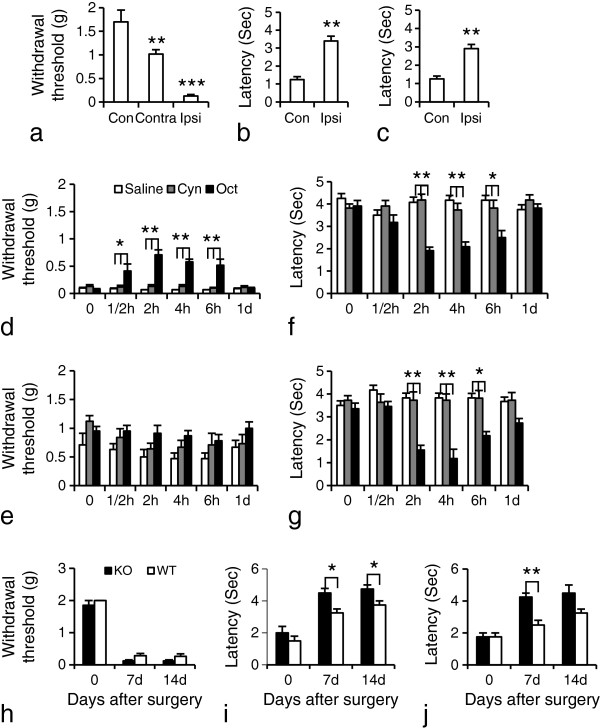Figure 9.
Oct increases pain threshold 14 days after SNI. (a) The mechanical threshold is reduced mainly in the ipsilateral hindpaw (n = 12), as compared with controls (n = 10). (b, c) The withdrawal response duration after cold stimulation (b) or nociceptive mechanical stimulation (c) is significantly increased ipsilaterally. Data are expressed as mean ± SEM. **P < 0.01 or ***P < 0.001 compared with the control group, respectively (n = 8 or 10 in each group). (d) Oct causes an ipsilateral increase in mechanical threshold as compared with saline- or Cyn154806 treatment (n = 11 or 12 in each group). (e) A transient effect of Oct on mechanical threshold is also found contralaterally, but does not reach significance. (f, g) Cold and Pin-prick tests in ipsilateral paws. A transient but pronounced effect is detected in Oct-treated group compared to saline- or Cyn154806-treated groups, most pronounced between 2 and 6 hrs. Data are expressed as mean ± SEM. *P < 0.05; **P < 0.01 compared with the saline- or Cyn154806-treated groups, respectively (n = 11 or 12 in each group). (h) After SNI injury, both sst2-KO mice and WT mice develop a significant ipsilateral reduction in the mechanical threshold as compared with baseline values. (i, j) Withdrawal response duration for both cold allodynia (i) and Pin-prick hyperalgesia (j) is significantly increased in both KO and WT mice on day 7 and 14. The effects are more pronounced in KO mice than in WT mice (n = 4 in each group). Data are expressed as mean ± SEM. *P < 0.05; **P < 0.01 compared with WT mice; n = 4 in each group.

